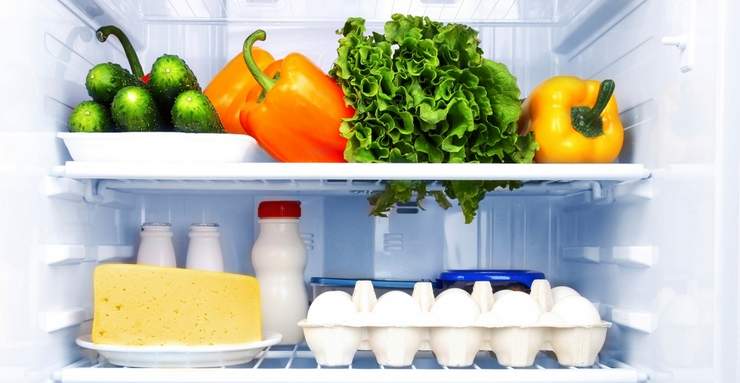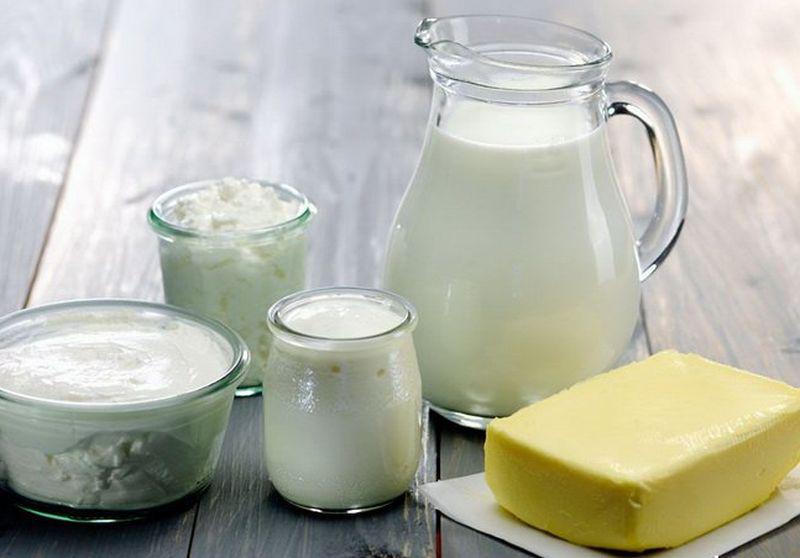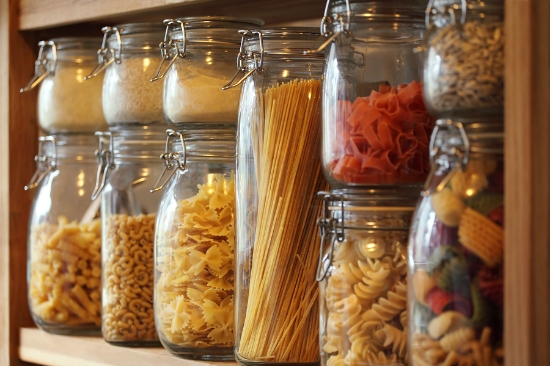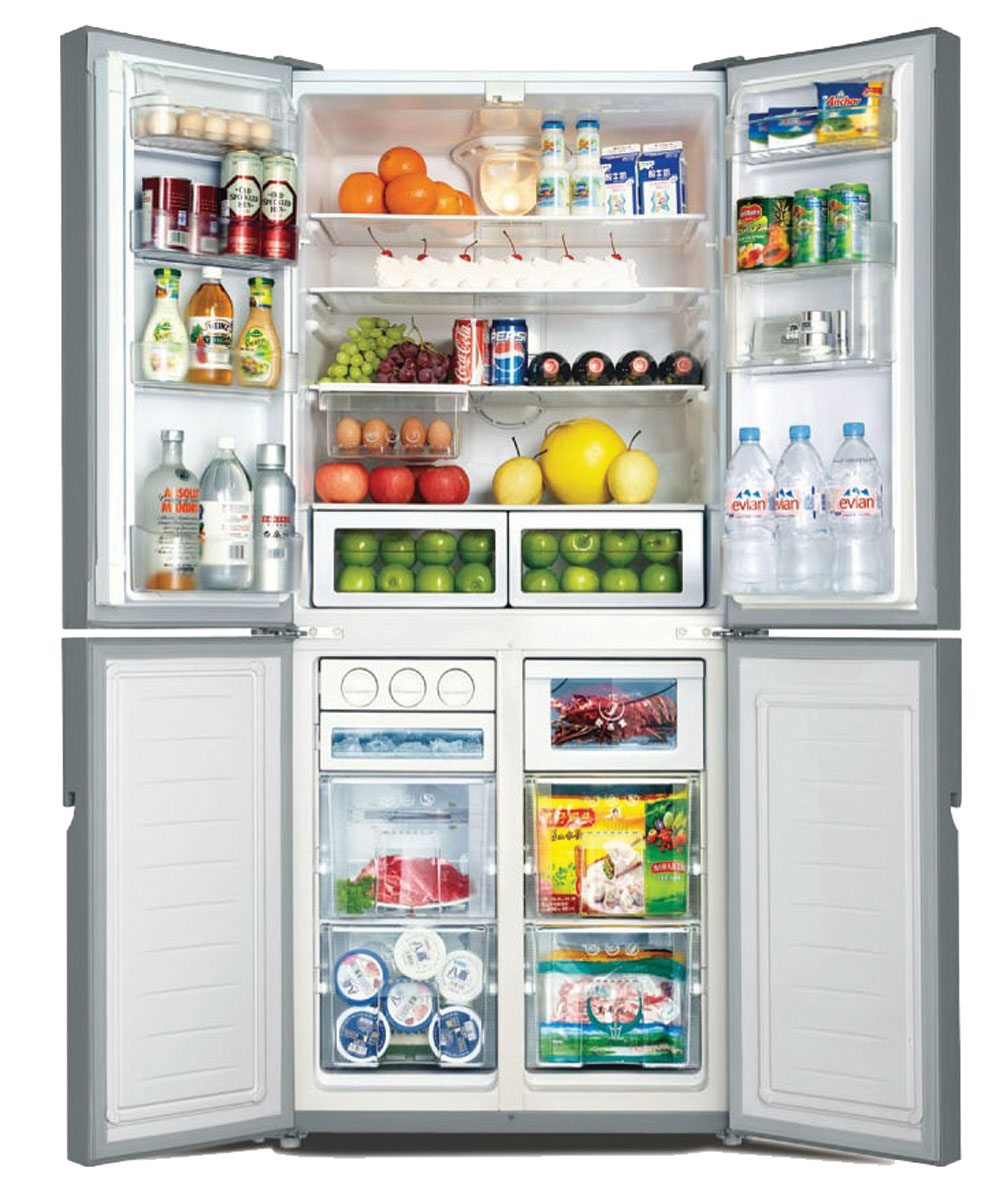How to store products in a restaurant?
2018-02-23
Storage of food products is a very important and important stage in the operation of any restaurant, cafe, bar and other catering. If the kitchen is not right to save the ingredients for different dishes, then they quickly deteriorate. Hence, from such a "food marriage" no maestro cooks can cook good food. Knowing the key features of storing products is not just necessary, but catastrophically important! We have no doubt that you have some notions in this area, but refreshing memory will not hurt ... As they say, repetition is the mother of the teaching. And in our case - this is the key to the success of your enterprise. After all, any public catering becomes popular when it is possible to eat deliciously in it, which is not possible without quality products and equipment. Functional and reliable kitchen equipment you can easily find on the pages of the online store of the company "Olegia", but you can find out how to properly store and store food raw materials from this article ... So, we will not torment you in anticipation. Begin!

For each product category, there are different storage conditions. Now we will take a closer look at the basic rules for saving meat, fish, poultry, milk, eggs, cereals, bakery products, vegetables and fruits. And we will start, perhaps, from meat ...
Meat
Fresh meat should be stored in refrigerators, cabinets or conventional refrigerators at a temperature of not more than +5 degrees Celsius. The packaging must be waterproof and airtight. Also, you can use a container that is cleaned from bacteria. Large pieces of meat (quarters of mascara) should be hung on hooks and placed so that they do not come into contact with each other. Frozen meat products are stored in freezers. They are stacked on special racks or shelves.
In no case do not take meat from suppliers if:
Meat
Fresh meat should be stored in refrigerators, cabinets or conventional refrigerators at a temperature of not more than +5 degrees Celsius. The packaging must be waterproof and airtight. Also, you can use a container that is cleaned from bacteria. Large pieces of meat (quarters of mascara) should be hung on hooks and placed so that they do not come into contact with each other. Frozen meat products are stored in freezers. They are stacked on special racks or shelves.
In no case do not take meat from suppliers if:
- pork has a sour smell, dark color, and fat is too soft;
- beef green or violet with an unpleasant odor;
- lamb covered with white coating and degreased.
Important: purchased products should be stored in a container manufacturer. You can replace the packaging in case it has been damaged. Then transfer the raw materials into labeled containers suitable for this category of product.

A fish
Fresh fish is stored in a special refrigeration equipment at a temperature not higher than + 5 ° C. If the fish are in packages with ice, then let it be kept. Fish fillets and pieces should be stored in a container of the manufacturer or in moisture-proof packages. Frozen raw materials should be in freezers, cabinets or chambers at a temperature of not less than -12 ° C.
You can not take fish for storage if it has gray and non-shining gills, as well as sunken red eyes. Also you should be alerted with a strong fishy smell and sloppy look of the carcass.
Tip: Always follow the rules of the commodity neighborhood. This will help to maintain the quality and taste of the products at the highest level!
Bird
Poultry meat is stored in refrigeration or freezing equipment: chambers, cabinets, chests or refrigerators. Storage temperature: +5 degrees Celsius and below. The humidity of air is 80-85%. Under these conditions, bird carcasses can be stored for not more than a week. Frozen carcasses or parts thereof are stored in refrigerated chambers at a temperature not exceeding + 2 degrees and humidity of 90-95%. Maximum shelf life: 25 days. Frozen meat stored at a temperature of -12 degrees and humidity 85-95%. Shelf life - up to 4 months.
Tip: Never store semi-finished and finished products together. Separately keep minced meat and bird carcasses, billets and ready-made meals, etc.
Fresh fish is stored in a special refrigeration equipment at a temperature not higher than + 5 ° C. If the fish are in packages with ice, then let it be kept. Fish fillets and pieces should be stored in a container of the manufacturer or in moisture-proof packages. Frozen raw materials should be in freezers, cabinets or chambers at a temperature of not less than -12 ° C.
You can not take fish for storage if it has gray and non-shining gills, as well as sunken red eyes. Also you should be alerted with a strong fishy smell and sloppy look of the carcass.
Tip: Always follow the rules of the commodity neighborhood. This will help to maintain the quality and taste of the products at the highest level!
Bird
Poultry meat is stored in refrigeration or freezing equipment: chambers, cabinets, chests or refrigerators. Storage temperature: +5 degrees Celsius and below. The humidity of air is 80-85%. Under these conditions, bird carcasses can be stored for not more than a week. Frozen carcasses or parts thereof are stored in refrigerated chambers at a temperature not exceeding + 2 degrees and humidity of 90-95%. Maximum shelf life: 25 days. Frozen meat stored at a temperature of -12 degrees and humidity 85-95%. Shelf life - up to 4 months.
Tip: Never store semi-finished and finished products together. Separately keep minced meat and bird carcasses, billets and ready-made meals, etc.

Dairy
Since, dairy products are highly perishable, they should be stored in a refrigerator or special refrigeration equipment. Containers for the storage of this raw material must have caps. The shelf life of fresh milk, kefir, curdled milk, curd and curd cheeses does not exceed 36 hours, and sour cream and boiled milk do not exceed 3 days. Much longer oil is stored. At a temperature of not more than 0 degrees, such product remains usable for 10 days. In the freezer, oil is stored for up to 15 days. It is unacceptable to store various fats and butter together with products that have a strong odor.
Eggs
Eggs are stored in a special packaging container at a temperature of no higher than 7 degrees Celsius in refrigerators or other refrigeration units. The shelf life of this product does not exceed 4 weeks. Egg powder is stored in dry and cool places. If it is diluted with water, then the storage temperature of this food raw material should not be above 5 ° C. A liquid egg should be stored only as indicated by the manufacturer. Never buy eggs if they have an unpleasant smell of sulfur or damaged shell.
Since, dairy products are highly perishable, they should be stored in a refrigerator or special refrigeration equipment. Containers for the storage of this raw material must have caps. The shelf life of fresh milk, kefir, curdled milk, curd and curd cheeses does not exceed 36 hours, and sour cream and boiled milk do not exceed 3 days. Much longer oil is stored. At a temperature of not more than 0 degrees, such product remains usable for 10 days. In the freezer, oil is stored for up to 15 days. It is unacceptable to store various fats and butter together with products that have a strong odor.
Eggs
Eggs are stored in a special packaging container at a temperature of no higher than 7 degrees Celsius in refrigerators or other refrigeration units. The shelf life of this product does not exceed 4 weeks. Egg powder is stored in dry and cool places. If it is diluted with water, then the storage temperature of this food raw material should not be above 5 ° C. A liquid egg should be stored only as indicated by the manufacturer. Never buy eggs if they have an unpleasant smell of sulfur or damaged shell.

Cereals, flour, pasta, dried fruits and granulated sugar
These products have a long shelf life, but if you do not comply with the rules for their storage, then you can quickly ruin even this "resistant" food raw materials. The premise in which such goods are contained must be dry and well ventilated. It is not permissible for sudden temperature fluctuations, because they can lead to a critical increase in moisture in products, which negatively affects their taste. Cereals and flour should be placed 15 cm from the floor. As containers use special bags, paper bags or jars with lids. Dry products easily absorb foreign odors, so consider this fact when placing these products.
These products have a long shelf life, but if you do not comply with the rules for their storage, then you can quickly ruin even this "resistant" food raw materials. The premise in which such goods are contained must be dry and well ventilated. It is not permissible for sudden temperature fluctuations, because they can lead to a critical increase in moisture in products, which negatively affects their taste. Cereals and flour should be placed 15 cm from the floor. As containers use special bags, paper bags or jars with lids. Dry products easily absorb foreign odors, so consider this fact when placing these products.
.jpg)
Bakery products
For storage of bread should use separate pantries. They should be equipped with good ventilation. The joint storage of wheat and rye bread is prohibited. In plastic bags bakery products dry up less, but they quickly moisten, which leads to the appearance of fungus and mold. Therefore this package can be used no more than a day. It is better to give your preference to paper bags. In them, bread breathes and remains soft enough for a long time. The shelf life of flour products on average does not exceed 74 hours. For example, the time for the realization of rye bread and rye-wheat bread is not more than 36 hours, and the wheat bread for 24 hours.
Vegetables and fruits
The temperature at which to store vegetables and fruits indirectly depends on the sort of stored product. Whole fruits or their pieces that are initially stored in ice packs do not need to be moved to other boxes - store the product so. Keep fresh vegetables in dry dark and cool rooms with good ventilation.
If the supplier wants to sell you fruit or vegetables in damaged (defective) packaging - refuse such an acquisition. Do not buy products of this type, if they are stored together with large pieces of ice. This means that the raw materials were subject to frequent defrosting and repeated freezing. It has lost its useful qualities or completely deteriorated.
Observe the rule: before you received the product - used before!
Remember, stitched products are subject to immediate cancellation and disposal!
For storage of bread should use separate pantries. They should be equipped with good ventilation. The joint storage of wheat and rye bread is prohibited. In plastic bags bakery products dry up less, but they quickly moisten, which leads to the appearance of fungus and mold. Therefore this package can be used no more than a day. It is better to give your preference to paper bags. In them, bread breathes and remains soft enough for a long time. The shelf life of flour products on average does not exceed 74 hours. For example, the time for the realization of rye bread and rye-wheat bread is not more than 36 hours, and the wheat bread for 24 hours.
Vegetables and fruits
The temperature at which to store vegetables and fruits indirectly depends on the sort of stored product. Whole fruits or their pieces that are initially stored in ice packs do not need to be moved to other boxes - store the product so. Keep fresh vegetables in dry dark and cool rooms with good ventilation.
If the supplier wants to sell you fruit or vegetables in damaged (defective) packaging - refuse such an acquisition. Do not buy products of this type, if they are stored together with large pieces of ice. This means that the raw materials were subject to frequent defrosting and repeated freezing. It has lost its useful qualities or completely deteriorated.
Observe the rule: before you received the product - used before!
Remember, stitched products are subject to immediate cancellation and disposal!

Summing up ...
Well, here we come to an end. We hope you have gathered a lot of useful information for yourself and are ready to apply it in practice! We need only recall that the specialists of the company "Olegiya" will always be happy to help you find the best quality trading or kitchen equipment. We know that you are not enough for success!





-280x210.jpg)